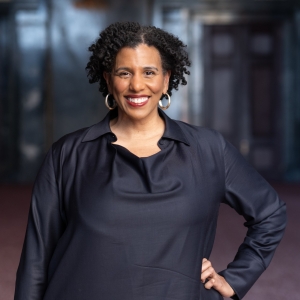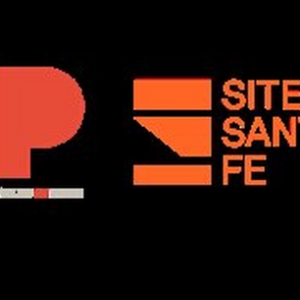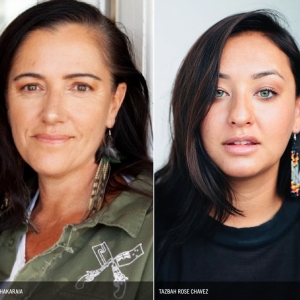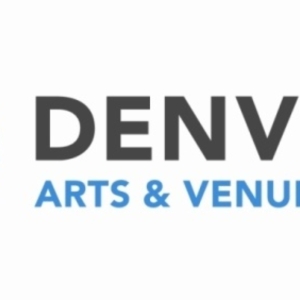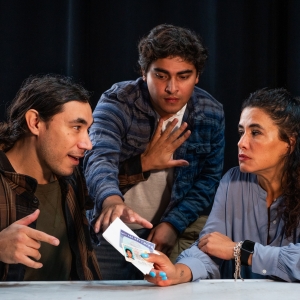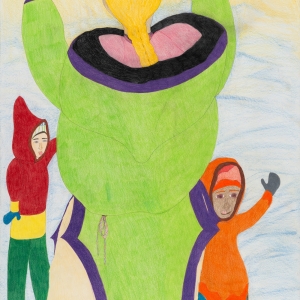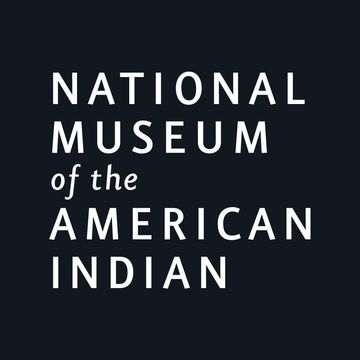
At a Glance
Time Needed: 60 min.
Ages: All
Allows Food/Drink: No
Luggage Storage: No
1 Bowling Green, New York, NY 10004 Get Directions
National Museum of the American Indian Videos
Hear from historian Paula Peters (Mashpee Wampanoag) as she discusses the importance of harvest traditions among Wampanoag communities today. This program originally aired February 2025, and is the fourth in a four-part series. Learn more and access the lesson: https://americanindian.si.edu/nk360/resources/First-Thanksgiving-How-Can-We-Tell-a-Better-Story Native Knowledge 360° (NK360°) is the National Museum of the American Indian's national education initiative to transform teaching and learning about American Indians. Discover inquiry-based, standards-compliant, interactive teaching resources for grades K-12 that are ready to use in your classroom. http://americanindian.si.edu/nk360
Learn how historical actions and events challenged a peace agreement and the relationship between the Wampanoag and the English through maps, video clips and a conversation with historian Paula Peters (Mashpee Wampanoag). This program originally aired February 2025 and is the third in a four-part series. Learn more and access the lesson: https://americanindian.si.edu/nk360/resources/First-Thanksgiving-How-Can-We-Tell-a-Better-Story Native Knowledge 360° (NK360°) is the National Museum of the American Indian's national education initiative to transform teaching and learning about American Indians. Discover inquiry-based, standards-compliant, interactive teaching resources for grades K-12 that are ready to use in your classroom. http://americanindian.si.edu/nk360
Learn about the importance of places and setting as we discuss key details about the Wampanoag nation and their homelands before English settlers arrived. This program originally aired January 2025 and is the second in a four-part series. Learn more and access the lesson: https://americanindian.si.edu/nk360/resources/First-Thanksgiving-How-Can-We-Tell-a-Better-Story Native Knowledge 360° (NK360°) is the National Museum of the American Indian's national education initiative to transform teaching and learning about American Indians. Discover inquiry-based, standards-compliant, interactive teaching resources for grades K-12 that are ready to use in your classroom. http://americanindian.si.edu/nk360
This inquiry resource provides evidence to help teachers and students dispel the myth of the “First Thanksgiving.” In this first professional development session for educators, we discuss two components of the Inquiry Design Model: Staging the Question and Supporting Question (SQ1) How has the story been told and why does it need to change? This program originally aired January 2025 and is the first in a four-part series. Learn more and access the lesson: https://americanindian.si.edu/nk360/resources/First-Thanksgiving-How-Can-We-Tell-a-Better-Story Native Knowledge 360° (NK360°) is the National Museum of the American Indian's national education initiative to transform teaching and learning about American Indians. Discover inquiry-based, standards-compliant, interactive teaching resources for grades K-12 that are ready to use in your classroom. http://americanindian.si.edu/nk360
The National Museum of the American Indian’s Native Cinema Showcase online is an annual celebration of the best in Native film. This year, the museum highlights an array of film shorts featuring a diverse range of Indigenous stories and perspectives, including stories of resilience, inspiration, and hope, as well as stories that entertain and educate. Countries represented are the United States, Peru, New Zealand, and Greenland. Four Indigenous languages are spoken in the films: Quechua, Māori, Kalaallisut, and Mohawk. All shorts are available to stream free November 21 (5 PM ET) to November 28, 2025 (5 PM ET). https://americanindian.si.edu/native-cinema-showcase-2025/ Generous support provided by The Walt Disney Company.
The museum welcomes the Kodiak Alutiiq Dancers to perform traditional and new songs and dances. The final performance on Monday, July 7 at 3 PM ET will be webcast at americanindian.si.edu/livestream. The Kodiak Alutiiq Dancers were formed in 1987 in Kodiak, Alaska. They continue to learn and share their Alutiiq/Sugpiaq ancestral heritage and increase pride through reawakening their dance traditions. The Alutiiq/Sugpiaq people have always danced as a community to perform rituals and ceremony, to share stories, and to entertain each other. Today, the group honors their ancestors by dancing their stories and living their culture. At the 2025 Smithsonian Folklife Festival (July 2-7), they will also hold dance workshops where visitors can try Alutiiq social dances. Visitors can watch and participate in Kakangaq, a traditional game to hone hunting skills, where players toss disks at a target on a seal hide. In the group’s tent, visitors can see salve making and headdress beading while learning about Alutiiq dress and regalia.
More in Financial District
More Museums
- The Tenement Museum
- New Museum
- International Center of Photography
- Museum at Eldridge Street
- National September 11 Memorial & Museum
- The Rubin Museum of Art
- Whitney Museum of American Art
- The Morgan Library & Museum
- Museum of Modern Art (MoMA)
- Museum of Arts and Design
National Museum of the American Indian Frequently Asked Questions
The closest subway stops to the National Museum of the American Indian at 1 Bowling Green in New York City are:
1. Bowling Green station: This subway station is located right next to the museum. It is served by the 4 and 5 trains. For the most up-to-date information on subway schedules and service changes, you can visit the official MTA website [here](http://www.mta.info/).
2. Whitehall Street station: This station is also within walking distance of the museum. It is served by the R and W trains.
I would recommend using the MTA Trip Planner tool [here](http://tripplanner.mta.info/) to plan your subway journey to the museum. Simply enter your starting location and the tool will provide you with the best subway route and any service advisories that may affect your trip.
While you're in the area, I also recommend checking out Battery Park, which is a beautiful waterfront park just a short walk away from the museum. You can enjoy stunning views of the Statue of Liberty and Ellis Island from here. Additionally, the Charging Bull statue is located nearby, which is a popular tourist attraction.
I hope you have a wonderful visit to the National Museum of the American Indian and enjoy exploring the surrounding area!
The closest NYC bus stops to the National Museum of the American Indian at 1 Bowling Green are:
1. Bowling Green/Battery Place: Served by the M5, M15, and M20 buses. You can check for updates on the M5 bus [here](http://bustime.mta.info/m/index?q=400001) and the M15 bus [here](http://bustime.mta.info/m/index?q=400015).
2. State Street/Bridge Street: Served by the M9 bus. You can check for updates on the M9 bus [here](http://bustime.mta.info/m/index?q=400009).
Please note that bus schedules and routes are subject to change, so it's always a good idea to check for updates before your visit. Enjoy your time at the National Museum of the American Indian!
The ideal length of time to plan for a visit to the National Museum of the American Indian in New York City depends on your level of interest and the amount of time you have available. On average, visitors spend about 1-2 hours exploring the museum's exhibits and galleries. However, if you have a deep interest in Native American history and culture, you may want to allocate more time to fully immerse yourself in the museum's offerings.
The museum showcases a vast collection of artifacts, artworks, and interactive displays that highlight the rich heritage of Native peoples throughout the Americas. Take your time to appreciate the intricate craftsmanship, learn about diverse indigenous cultures, and engage with the thought-provoking exhibitions.
Additionally, the museum often hosts special events, performances, and film screenings, so be sure to check their schedule to see if there are any activities you'd like to attend during your visit.
Remember, it's always a good idea to plan some extra time in case you want to revisit certain exhibits or explore the museum's gift shop, which offers unique Native American crafts and souvenirs.
The National Museum of the American Indian in New York City has a food and drink policy that prohibits outside food and beverages from being brought into the museum. However, there is a café located within the museum where visitors can enjoy a variety of food and drink options. The café offers a selection of delicious meals, snacks, and beverages inspired by Native American cuisine. So while you can't bring your own food, you can definitely grab a bite to eat at the museum's café and experience some unique flavors during your visit.
The National Museum of the American Indian in New York City does not have a designated luggage storage facility. However, they do offer a coat check service where you can leave your coats and small bags. It's important to note that larger bags, suitcases, and backpacks are not allowed inside the museum. If you have larger items, I recommend looking for nearby luggage storage services or checking with your hotel if they offer luggage storage for their guests.
Yes, the National Museum of the American Indian in New York City is definitely worth a visit for visitors from other countries and non-English language speakers. The museum offers a rich and immersive experience that showcases the diverse cultures and histories of Native American peoples.
While English is the primary language used in the museum, there are resources available to accommodate non-English speakers. The museum provides multilingual audio guides in several languages, including Spanish, French, German, Italian, Mandarin, and more. These audio guides offer detailed explanations of the exhibits, ensuring that visitors can fully appreciate the museum's collections and learn about Native American cultures in their preferred language.
Additionally, the museum features visual displays, artifacts, and interactive exhibits that transcend language barriers. Visitors can explore the stunning art, traditional clothing, historical objects, and contemporary works that tell the stories of Native American communities throughout the Americas.
The National Museum of the American Indian is committed to creating an inclusive and accessible experience for all visitors, regardless of their language or cultural background. So, whether you're a non-English speaker or visiting from another country, you can expect to have a meaningful and enjoyable visit to this unique cultural institution.
The National Museum of the American Indian in New York City is a fantastic destination for visitors of all ages. While there is no specific age range recommendation, the museum offers exhibits and programs that cater to a wide range of interests and knowledge levels. Whether you're a history buff, an art enthusiast, or simply curious about Native American culture, you'll find something to engage and educate you at the museum. Families with children will also find interactive exhibits and educational activities designed to entertain and inspire young minds. So, whether you're traveling with kids or exploring on your own, don't miss the opportunity to visit this unique and enriching museum!
Videos



